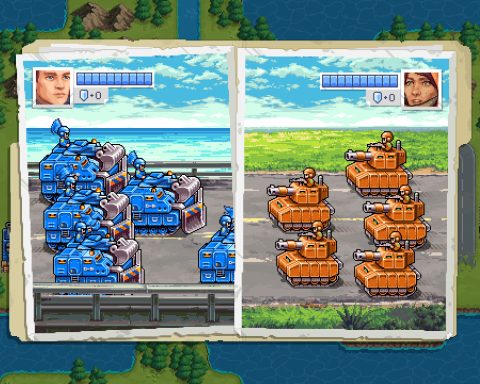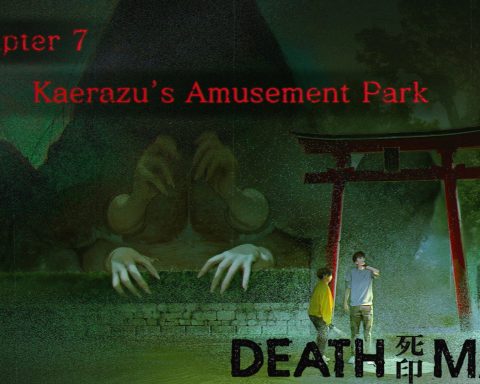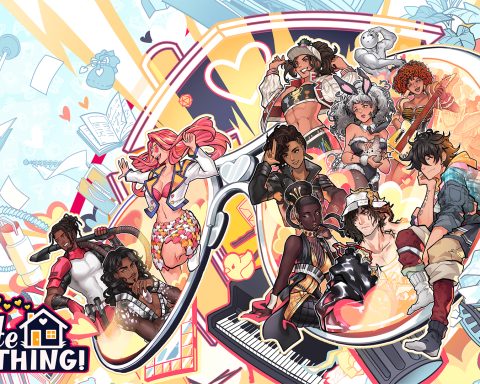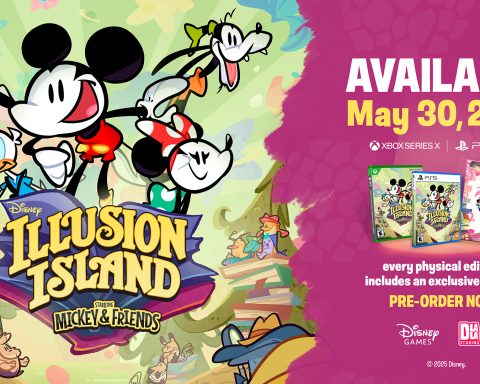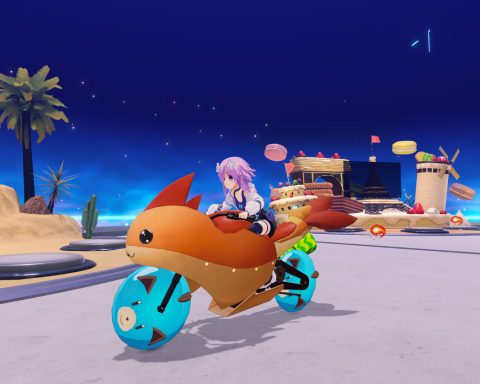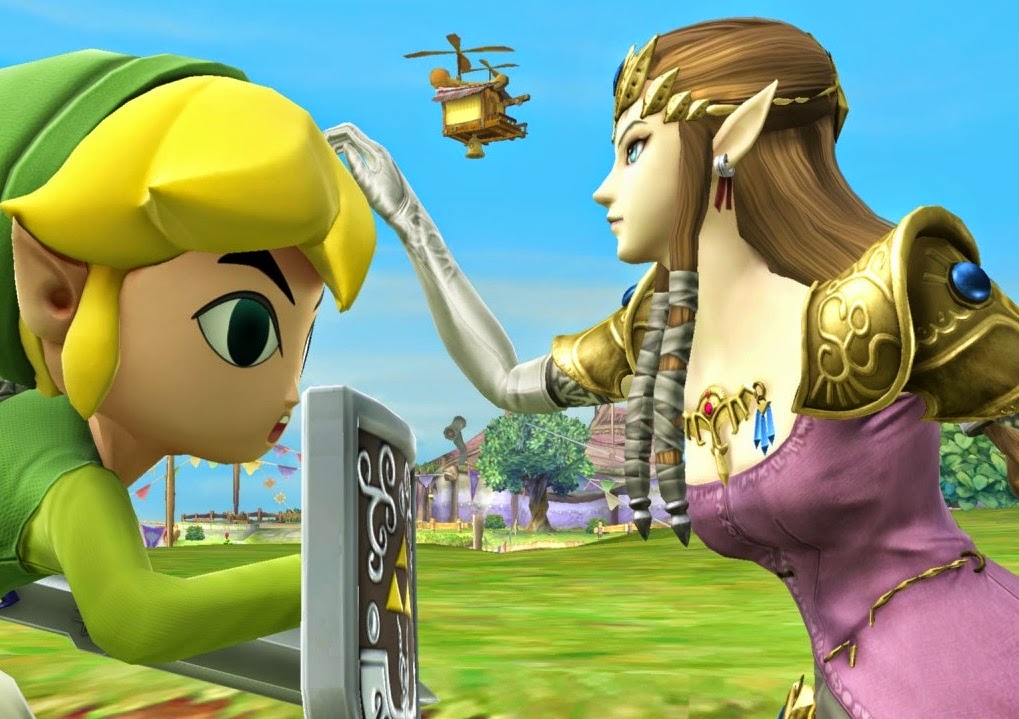 Review by Matt S.
Review by Matt S.
When I reviewed Super Smash Bros. on the Nintendo 3DS a few months ago, I had issues with it, but I did note that the Wii U version would likely resolve all of those issues.
Well, that prediction turned out to be entirely accurate. The Wii U version of Smash Bros. is nothing short of incredible.
What’s worth noting from the outset is that the game is fundamentally different to the Nintendo 3DS game. There are different arenas to battle on, and entirely different play modes. The quickest path to my heart is give me a board game, and Super Smash Bros. does do that in its Smash Tour mode. The board game play itself is simple, but it’s nevertheless incredibly addictive. With each turn players roll the virtual dice, and move around the map, trying to pick up fighters that are lying about the place, and then powering them up across a range of statistics (power, speed, defence, and so on), that make the characters more effective in battle. At the end of a certain number of turns, you take the characters that you’ve earned, and fight with your opponents in a traditional Smash Bros. battle. The board also is also littered with traps and events that can affect how characters move around the board, and it is busy enough to ensure a mad scramble to try and collect as much loot as possible for the critical advantages in the final battle.
I prefer this to the 3DS riff of the theme, which played out more like a platformer, and was perfectly competent, but there is a greater level of strategy to the board game format, and because turns play out simultaneously (i.e. people roll the dice together and move at the same time) it’s quite possibly the fastest digital board game I’ve ever encountered. There’s room for solid strategy to have an impact too, with the statistics and character bonuses you can accumulate making the final battle either much easier or much, much more difficult for you, and the intensity of the build up makes this the most logical extension on the existing combat for people who want to sit down with friends for a solid multiplayer session.
There’s another couple of single player modes, but to be honest, beyond the Smash Tour mode and the more traditional arcade mode, I wasn’t especially interested in those. There are some neat variations of the core fighting mechanic, but Special Orders, which is a series of challenges set by boss characters, Master Hand and Crazy Hand, in order to earn rewards, and Event mode, that tasks up to two players to achieve specific challenges, were ultimately too much like a gimmick for their own good.
As with previous Smash Brothers games, it’s in the local multiplayer were Super Smash Bros. truly excels, and unlike the 3DS version that requires every player to have their own console and copy of the game, the advantage of home console multiplayer is that you only need one console and a couple of controllers. Nintendo has gone out of its way to give players as many options for controllers as possible, with players able to jump into a battle with as little as a Wiimote (not ideal without the nunchuck, but still possible), or the Classic Controller, an adaptor letting long-term fans pull out their trusty Gamecube Controllers, and even the 3DS being able to link with the Wii U to function as a controller. It was important to give as many play options as possible, because the big new feature in the multiplayer that is exclusive to the Wii U version is eight player battles.
Now these battles can only play out on some of the larger stages, and have the unfortunate consequence of making those stages too big to be much fun in conventional four player battles. But getting eight friends together for some Smash action is a thrill that, frankly, I never even realised I wanted. Online multiplayer is limited to four players because there’s no way Nintendo’s netcode could handle eight individuals inputting actions at once, and stands as proof that Nintendo is still most comfortable in the local multiplayer experience. In fact, as with the 3DS game, the Wii U version of Super Smash Bros. contains just enough incidences of lag for me to quickly give up on it.
With a full 15 new characters, and a total roster of almost 50, there is so much possible variety to the multiplayer that it’s functionally an endless game, so long as you maintain your friendships to have people to play with. When I think back to how many raw hours my friends, family and I were able to eke out of the original Super Smash Bros. on the Nintendo 64 with its 12 characters and nine stages, it’s truly incredible just how much additional content is in this game. And, including the many stages already in there, the ability to create your own returns from Smash Bros. Brawl on the Nintendo Wii, further extending the game’s value.
On the field of battle not much has changed from the early days of Smash Bros. The goal remains to build up the opponent’s damage percentage by landing attacks on them. That percentage starts at 0, and once an oppontent’s gets to around 100 per cent it’s time to try and knock an them out of the ring with a big attack to score a point. As with previous games, each characte has a range of attacks tied to two main buttons – a “special attack” button and a “regular attack” button with a mechanic in place to hold the regular attack for a length of time in order to make it more powerful. For the most part Nintendo has left the attacks and strategies of returning characters the same as in previous games (though there has been some rebalancing that has gone on that is subtle enough that only the competitive players will notice them). The 15 or so new characters are a good mix though, and add some interesting quirks to the way battles play out. Shulk is an especially interesting character for advanced players which his ability to transition between different stances, and Mega Man adds a interesting twist in being the first character that is almost entirely reliant on his ability to attack from a distance. But my favourite is Pac-Man, because he’s a heck of a troll character. Munch munch boom.
Another thing that has been significantly enhanced in the combat is the variety of the items that can drop onto the battlefield. There are all kinds of additions here, from a wind blower that hurls opponents across the map, to a sword made out of the twirling fireballs of classic Mario games which is powerful, but shrinks with every hit. As with the Wii game once a match a “final smash” ball will appear on the battlefield, and the first character that smashes that will be able to unleash their unique special power. These are incredibly powerful and can turn the tide of a battle, but the developer has weakened them somewhat from the Wii game so that there’s at least a chance to avoid most of them this time around.
The presentation of the game is gorgeous, and on the nice big TV screen there’s none of the squinting that annoyed me so much with the 3DS game. Environments are nicely detailed, and characters exhibit a lot of personality as they run about. On the really big maps the camera can scroll back so far that things are still a little too small, but even then it’s easy to keep up with the action.
The only real disappointment is a big one. Nintendo timed the launch of its Amiibo miniatures specifically to tie into this game, and while the Amiibos will be compatible with other games, this was meant to be the main game in the short term to show them off. You can use these Amiibos to create your own personal versions of the characters they represent into the game, and from there they level up from fighting, and you can “feed” them objects to power them up further. It’s a great concept, and as we’ve seen from both Skylanders and Disney Infinity, people do love having physical miniatures to interact with in their games.
Except that you can’t control your Amiibo characters in Super Smash Bros. They will always be AI-controlled, and can either be on your side for team battles or an opponent to test your skill against, but not being playable I find to be borderline deceptive, given Nintendo’s marketing rhetoric around these pieces. The miniatures themselves are very collectible and constructed well – at least on par with the quality of the Disney pieces, but they add very, very little of worth to the game, and that’s really disappointing.
Amiibo aside, Super Smash Bros. is a triumph of good design, a generous approach to content, and making smart refinements to an already stellar franchise in order to keep fans interested. It is also much, much better than the 3DS version of the game, and caps off a stellar end to the year for the Wii U that included Bayonetta 2 and Hyrule Warriors. There’s no better time to buy into the console.
– Matt S.
Editor-in-Chief
Find me on Twitter: @digitallydownld







